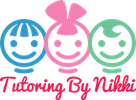
Year 1
After going through all the ‘firsts’ in foundation stage, both you and your child will know the ropes when starting Year 1. But there are still plenty of new experiences to be had as the work gets more complicated, and your child begins the path to Key Stage 1 SATS at the end of Year 2
In Year 1 Maths, children will need to count forwards and backwards up to 100. They will need to know their addition and subtraction facts to 20. They will start to learn about times tables through the use of simple multiplication and division problems, for which they will be given objects to help them work out what is being asked.
Children will need to find half and a quarter of a shape or quantity. They will start to measure using standard units and will learn to tell the time to the hour and half-hour. They will learn to name some common 2D and 3D shapes.
In Year 1 English, children will consolidate their learning of phonics and should become confident in being able to match each group of letters with the sound it makes. They will be encouraged to read a wide range of stories and listen to poems.
Children will learn to spell a range of words containing the sounds already taught. They will learn to form all the letters of the alphabet in lower case and capitals, plus the digits 0 to 9. They will sequence sentences to form short stories. They will punctuate sentences with a capital letter and a full stop, they will also begin to learn about question marks and exclamation marks.
Year 2
As your child begins Year 2, you’ll no doubt hear the word SAT’s mentioned. These exams won’t happen until later in the year, but it’s important to balance KS1 SATs preparation and practice with the daily lessons in Year 2 Maths and English.
Children in Year 2 will learn to add and subtract with two-digit and one-digit numbers. They will learn multiplication and division facts for the 2, 5 and 10 times tables. Children will need to find 1/3, 1/4 1/2 and 3/4 of a shape or a quantity of objects. They will learn about measures, including weight, capacity, length and time (learning to tell the time to 5 minutes). They will learn to name and describe the properties of common 2D and 3D shapes. Year 2 children carry out activities where they interpret and construct pictograms, tally charts,, block graphs, and tables.
Children will build on their phonics work from Year 1 until they are reading words automatically, without having to sound out. They will continue to read a range of different stories, but also be introduced to non-fiction books. They will be able to apply the spelling rules they have learnt. They will be more confident in their formation of letters and will learn how to start joining their handwriting. They will have plenty of practice writing stories and will also write some poetry. They will be taught to use capital letters, full stops, exclamation marks and question marks correctly. They will also be encouraged to use sentences with two parts, joined by conjunctions such as when, if, that and because.
